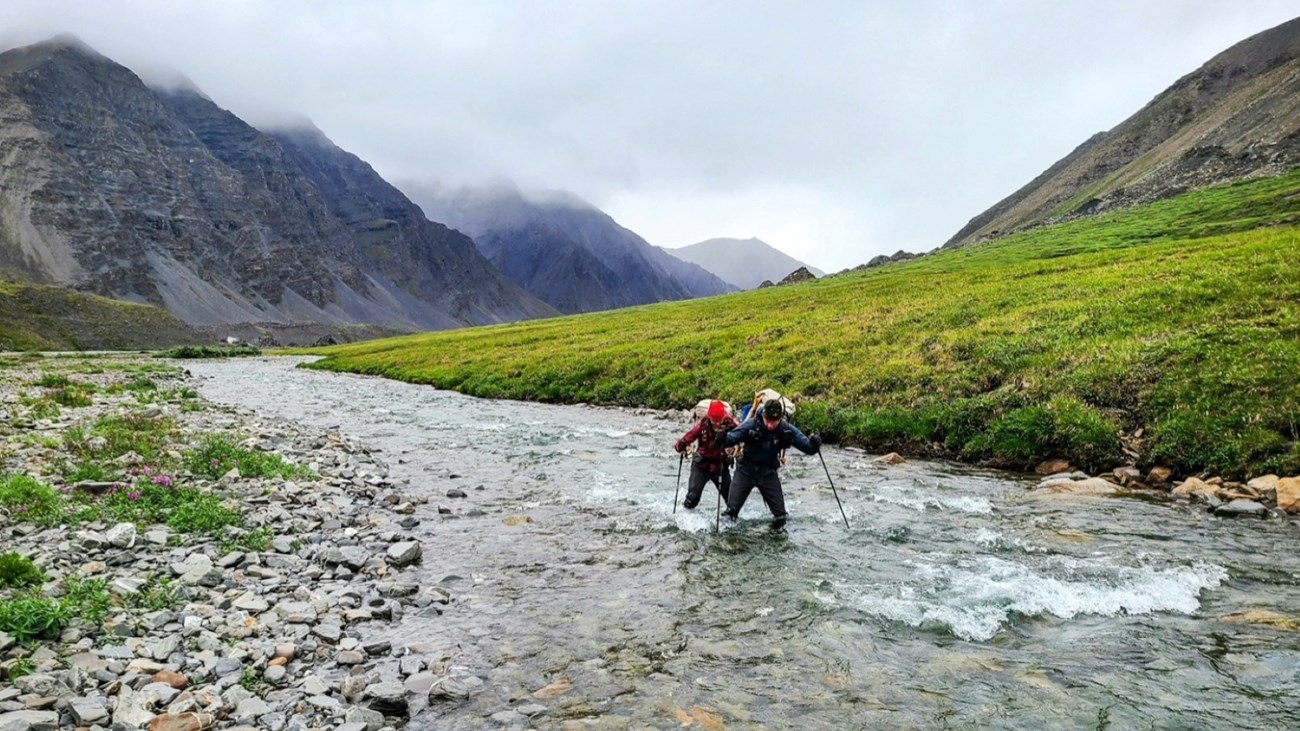
NPS/Josh Spice
Keep these points in mind when crossing water channels:
Choose the safest TIME to cross:
- Cross early in the day whenever possible;
- Plan extra time into your trip, so you can wait until water levels are lower
- Be aware of weather conditions in the area, cross before storms whenever possible. Water levels may vary drastically according to season, time of day, temperature and upstream weather conditions.
- The widest or most braided portion of the channel is usually the most shallow.
- Straight channels usually exhibit uniform flow while bends often reveal deep cut banks and swift water on the outside edge.
- Water has less momentum on level ground than when flowing down an incline.
- If hiking solo, use a hiking staff, held upstream, to create a more stable, three point stance. Move only one contact point at a time.
- Two or more hikers should cross parallel to the current with the strongest and heaviest member upstream to lessen the force on the other hikers. Walk across with arms linked, or face upstream and sidestep across.
- In deep water, the triangle method is safest. Facing each other, three people grip each others shoulders or packs and work their way across one person, one leg, at a time.
- NEVER cross in bare feet. Wear boots or bring extra shoes for crossings.
- Move one foot at a time, sliding it across the bottom.
- There is much debate on what to do with a backpack when crossing waterways. If pack straps and belt are loosened, to expedite removal in the event of a fall, the loose pack may cause instability while crossing due to the shifting weight. Also, your backpack contains all the survival gear needed in the event of a swim that will likely lead to hypothermia. Be familiar with pack buckles and be prepared to shed your pack to remain afloat, yet not lose it entirely when you need it most.
- Have sleeping bag and extra clothing packed tightly in dry bags inside your pack.
- Normally, when hiking trails, water crossings are singular events and dry clothing can be removed and put back on once the crossing is complete. However, in Alaska, wet conditions are widespread outside of water crossings. Stay in your clothes, socks, and footwear, as you will usually remain damp for most of your trip. Have dry clothing, especially socks, to change into once your are done traveling each day.
- Wear polypropylene or nylon clothes.
- Bulky and knit garments trap glacial silt.
- Be prepared to lose your pack if you fall or trip in the river.
- Before crossing, place your communications devices and basic survival gear (fire starter, emergency space blanket, etc.) in a waterproof bag and store it on your body during the crossing. If your pack gets away and is lost, your survival may depend on these critical items.
If a crossing seems too risky...it probably is!
ALWAYS BE WILLING TO TURN BACK OR WAIT FOR A MORE SUITABLE TIME IF A CROSSING APPEARS TOO DANGEROUS!
Last updated: April 22, 2022
